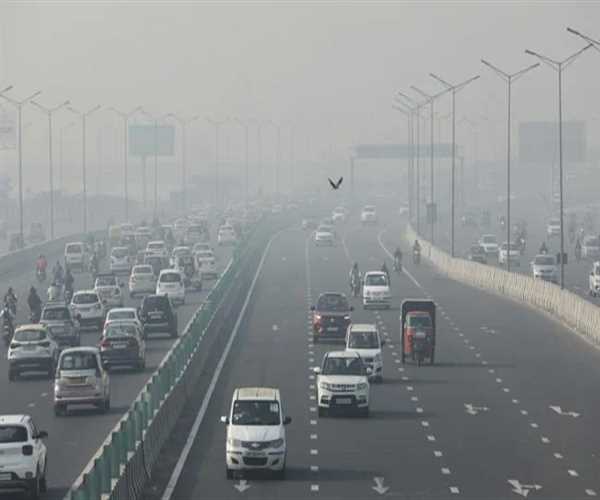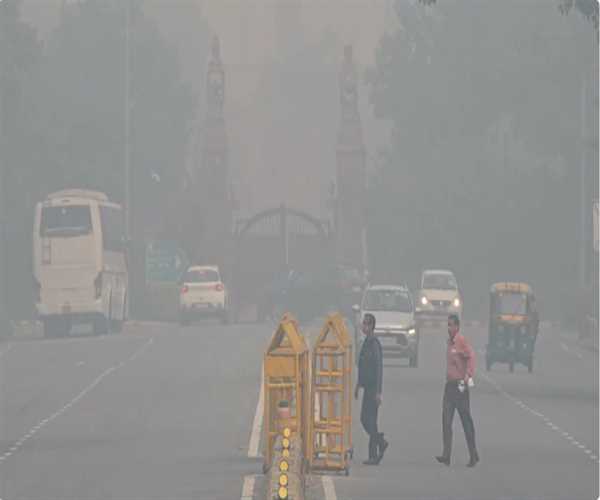Search here

13-Nov-2023 , Updated on 11/13/2023 10:18:04 PM
Delhi pollution again increases after SC bans the firecrackers
The Supreme Court's restriction on firecracker sales in the NCR had the intended effect of reducing their availability, but it unfortunately did not fully address the pollution issue, leading to potential increases in pollution levels.
Upon receiving the circular and notice from the SC, the general public enthusiastically embraced it and, in a celebratory manner, disregarded the ban imposed by the SC and symbolically destroyed it by igniting fireworks.
The Supreme Court only prohibited the sale of firecrackers in the Delhi NCR area, they did not impose any restrictions on purchasing and detonating them. The current weather conditions hold Delhi entirely accountable for the air quality it inhales.
It is indeed distressing to observe that a large number of educated and school-going children engaged in the activity of setting off fireworks, only to express concern about the air quality the following morning.
The persisting issue of pollution in Delhi is consistently caused by various factors. These include road dust accounting for 50% of pollution, industrial emissions contributing to 23%, and emissions from public and private vehicles making up 7% of the problem.
One effective approach to mitigating the adverse impact of air pollution caused by road dust is through the implementation of sustainable measures at the administrative level. Several measures have been implemented to address this issue; however, notable progress remains elusive. Effectively cleaning dust particles on roads and garbage sites has the potential to significantly improve road dust conditions.

Currently, the NGT has implemented stringent regulations regarding industrial emissions in the Delhi NCR region. The project has undergone a rigorous revision process, taking into account various factors including the project's feasibility, environmental concerns, and others.
The government has implemented numerous regulations to address air pollution resulting from industrial emissions. Any non-compliance is subject to significant penalties and legal action, overseen by the NGT. Although there has been notable progress in this area, we are still far from achieving our goal of reducing pollution caused by industrial emissions.
It is important to stay informed about the Delhi state government's " ODD-EVEN" policy concerning vehicles. While it did not succeed in addressing vehicle-related air pollution, it is important to acknowledge the significant impact of these emissions, as they contribute to a sharp increase in pollution levels.
An additional factor contributing to this problem is the combustion of agricultural remnants in regions such as Punjab and Haryana. This serves as the primary cause of pollution during the Diwali festivities. Air pollution is caused by the burning of crop residue in the fields by small farmers in this area due to financial constraints and a lack of knowledge.
The Indo-Gangetic plains are affected by air pollution due to the westerlies and other factors caused by the western disturbance, resulting in the transportation of pollutants to the area. As a result of these pollutants, they do not mix with the clouds and instead rise, retaining their warmth and creating a cloud layer that leads to the formation of fog, smog, and other health-damaging effects.
Although the burning of residue has been prohibited by the state government, the enforcement of this restriction poses its own set of difficulties.
Small-scale farmers lack sufficient funds to transport their agricultural waste to the designated government area, which they perceive as an unnecessary financial strain. Instead, they opt to burn the residue on their fields, as it provides natural fertilization by enriching the soil with nutrients. Hence, they question the rationale for shouldering this burden.
One smart approach to address the issue is by implementing a ban on fireworks, which can effectively alleviate the sudden surge in air pollution caused by the high pollution levels currently witnessed in Delhi NCR. Diwali is primarily celebrated as a joyful festival of illumination, family bonding, and exuberant firecracker displays, particularly enjoyed by children and teenagers.
Solution
The government needs to find a well-rounded solution by enacting regulations on the substances used in fireworks. Additionally, there should be a focus on conducting research on eco-friendly methods for composing fireworks, allowing for their use not only during festivals like Diwali but also on various occasions.
The governments of Punjab and Haryana ought to prioritize the welfare of their small-scale farmers, enlightening them about the harmful effects of burning crop residue on the environment. Additionally, they should explore more equitable means, such as Direct Benefit Transfer (DBT), to distribute funding, thereby ensuring that the most vulnerable and economically disadvantaged farmers benefit the most.
In summary, the Supreme Court's decision to ban firecrackers cannot be considered as the definitive solution. Although it may slightly reduce pollution, it cannot be deemed as the sole solution. Currently, it is advisable to effectively reduce the pollution level to prevent any further harm; however, in the long term, these measures may erode the spirit of the festival. India, recognized for its rich culture and strong beliefs, these measures, although small in scale, possess the potential to greatly impact the mindset of the majority, leading towards a greater focus on personal festivities and social media celebrations. This trend is primarily observed in today's predominantly employed sectors.
SEO and Content Writer
I am Drishan vig. I used to write blogs, articles, and stories in a way that entices the audience. I assure you that consistency, style, and tone must be met while writing the content. Working with the clients like bfc, varthana, ITC hotels, indusind, mumpa, mollydolly etc. has made me realized that writing content is not enough but doing seo is the first thing for it.
Join Our Newsletter
Subscribe to our newsletter to receive emails about new views posts, releases and updates.
Copyright 2010 - 2025 MindStick Software Pvt. Ltd. All Rights Reserved Privacy Policy | Terms & Conditions | Cookie Policy